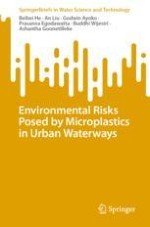This book presents comprehensive knowledge regarding the spatial and temporal distributions, influential factors, interactions with coexisting contaminants, migration behavior, and environmental risk posed by microplastics (MPs) in urban waterways. It provides a novel theoretical approach for the combined risks from MPs and coexisting contaminants, and advanced three-dimensional modeling techniques for different MPs’ dispersal and transport behaviors in urban waterways. Additionally, this book presents a scientifically robust investigation on the correlations between various influential factors and heterogeneity in relation to MP presence in river systems. The new knowledge presented would be of particular interest to readers such as urban water management professionals, urban plastic waste regulators, decision-makers, urban planners, and water environment quality model developers, as it provides practical solutions and recommendations for plastic-polluted river quality improvement from a risk management perspective.
